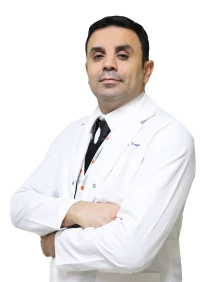Recovery Process Is Faster in Arthroscopic Shoulder Surgeries
 11.04.2022
11.04.2022Closed shoulder surgeries are the procedure of making small incisions with arthroscopy method to make inside of the shoulder joint visible and to perform the necessary interventions closed. For this procedure, a thin, long and luminous camera system called fluoroscopy is used. During surgery, this fluoroscopy device projects live video images from inside the joint onto the monitor. Thanks to these images, the problem in your shoulder is identified and can be treated. We can even see and intervene in the farthermost points that we cannot see with open surgery. With open methods, we have to cut our intact tissues to reach the depths of the joint. These tissues take a long time to heal, and while healing, conjointness may develop, creating a limitation of movement in the shoulder joint. These problems are not experienced in the arthroscopic (closed) method. Since very small incisions are made in the arthroscopy method, the recovery period is much shorter and much less painful compared to open surgery.
Shoulder Problems We Can Treat with Closed (Arthroscopic) Method
-Shoulder impingement syndrome
-Shoulder muscle (rotator cuff) ruptures
-Recurrent shoulder dislocations
-Frozen Shoulder
-SLAP lesions
-Biceps tendon pathologies
-Suprascapular nerve compression
-Shoulder calcification and related free bodies
Shoulder Impingement Syndrome
Using the arm at overhead for a long time can lead to compression and pain in the rotator cuff muscles and bursa tissues. In this case, arm movements are painful and restricted. First of all, the treatment is non-surgical medications, shoulder injections and/or physical therapy, but patients who cannot be successfully treated with non-surgical methods should be operated. With the arthroscopy method, the inflamed tissues are cleaned and the acromion bone eminence that compresses these tissues, if any, may be trimmed. Coracoacromial ligament may also be cut. After these procedures, the compression and pressure in the tissues are reduced. Now, the patient's arm is painless and can move more comfortably.
Repair of Shoulder-Muscle (Rotator Cuff) Ruptures
It is the condition where shoulder arthroscopy is the most frequently applied. The rotator cuff may rupture as a result of a sudden injury or overuse. This can lead to pain, weakness in the arm, and loss of normal shoulder movements. With the arthroscopic method, these muscles are conjugated to the bone with special anchors. It heals much faster and painlessly than the open method.
Recurrent Shoulder Dislocation (Bankart – capsular stretching)
If the capsule is severely damaged in shoulder dislocations, it flexes and loosens and cannot hold the joint in place. The bones in the joint feel as if they are moving more than necessary. With the arthroscopic method, this capsule is repaired by stretching it. With the open method we have to cut many important intact tissues. This creates a long and painful period for the patient and conjointness may occur due to these cut tissues and limitation in shoulder movement may develop. Therefore, arthroscopic method is the gold standard in the treatment of recurrent shoulder dislocations.
Frozen Shoulder
In patients who do not respond to non-surgical treatments in the frozen shoulder, the tissues that form conjointness can be loosened arthroscopically and full shoulder movement is achieved. In frozen shoulder, the shoulder needs to be loosened 360 degrees all around and it is not possible to reach these areas with open surgery. All areas can be reached with the arthroscopic method in the surgical treatment of frozen shoulder, and therefore the arthroscopic method should be preferred in the surgical treatment of frozen shoulder.
Other Shoulder Problems
With the arthroscopic method, suprascapular nerve compression, SLAP repair, biceps tendon problems and removal of intra-articular free bodies are also possible. Also in these cases, the arthroscopic method ensures a faster and painless recovery compared to the open method.
